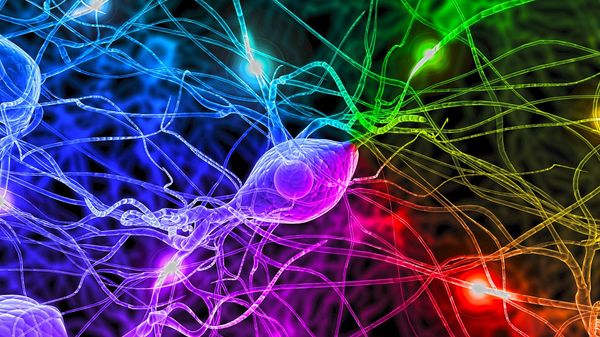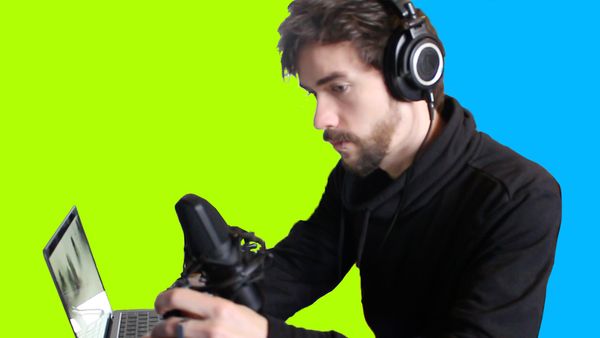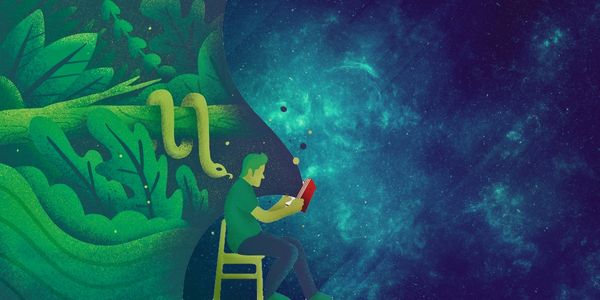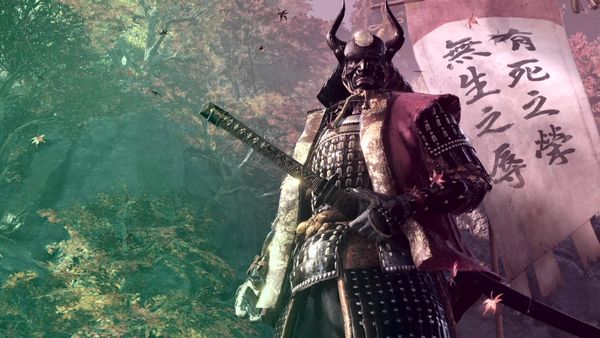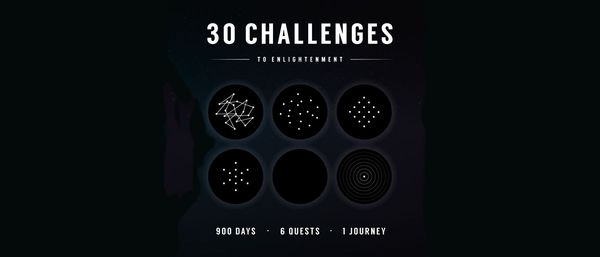Anthony W. Richardson • • 6 min read
How to Give Your 200,000 Year Old Brain a Much Needed Software Update

By most scientific accounts, the current structure of our human brain is Middle Paleolithic, or more simply 200,000 years old. For a perspective of the world during that time, our ancestors were wandering around in what is now modern day Ethiopia, and there may have been as few as 10,000 of us. We were a rugged, small, nomadic race that somehow foraged through the tail-end of our evolution with a limited life expectancy of only 15 years. A far cry from what we experience today, the world was dangerous, unforgiving and harsh. So dangerous, in fact, according to the Toba catastrophe theory, as early as 70,000 years ago the human race became almost extinct.
Add saber-toothed cats, infection, wooly mammoths, disease, toss in some giant apes (think Bigfoot + Tasmanian Devil), and it’s almost as scary as vacation without wi-fi. Talk about first world problems.
Early humans didn’t have the same peace of mind. Literally. Dan Siegel, M.D., founder of the discipline of interpersonal neurobiology, modeled nine functions of the prefrontal cortex:
- Regulating of the autonomic nervous system — staying calm and engaged
- Quelling the fear response
- Regulate emotions –resilience is not blocked by fear or shame
- Attunement — the felt sense of another’s experience, someone else
“getting” ours - Empathy — You know what I know, and I know that you know
- Response flexibility — pause, options, evaluate options, appropriate decision
- Insight — self-awareness
- Intuition — the “gut” feeling
- Morality
So, instead of what we could use today as healthy thought patterns, their thought patterns were evolving into, among other things, what we now call a fight or flight response or:
“a physiological reaction that occurs in response to a perceived harmful event, attack or threat to survival.”
As with anything in the field of evolutionary psychology, when given enough time, the ones with the best fight or flight responses lived and those with the worst, died. The question is, do we need it as much as we once did? Some say not. And get this: what we as a species quietly built as a self-protection method millennia ago now causes us to freak out about stupid shit daily. Old brain. New world. Thanks for the anxiety, grandpa.
Worst. Game show. Ever.
So advanced minds have an understanding that fiercely paying attention was a requirement of survival. That was step one.
Step two: we learned that with that with regards to attention, the ones who made good decisions about the perceived stimulus lived longer. Simply, the calm daydreamers were the first to get eaten and those with a knack for focus survived. Pause a moment and take a hard look at the other people in your environment. Now consider that your very survival is on the line. Ask yourself: who would you want on your team, back in the day:
“Let’s see who can hear the sound of the two-ton, pre-historic murder beast in the bush before it bites your face off.”
Today, fiercely paying attention is no longer a requirement for survival. I’ve placed the previous sentence in bold in hopes that you may take it more seriously, perhaps even read it again. Because of this, we have adapted (as individuals, not as a species) into a modern mindset of allowing a wide variety of stimulus to go unnoticed. There is far too much noise to treat every piece of information as critical as our ancestors did long ago. Of course, you can get hit by a bus while crossing the road but “accidents” are only ranked five on the leading causes of death list.
The true problem here, as outlined above is that we are equipped with old hardware in a new world that provides us a plethora of novel stimulus. Our mind thinks the same way we needed to think 200,000 years ago. We will never receive, to put it in modern terms, a mental software update. Technology moves fast and evolution moves slow. Today, anything that frees you from the burden of cognitive thought is a welcome experience in your modern minds. So, as a society, we tend to let other people think for us and yet …
We All Wanna Be Like Mike
Have you ever wondered what causes you to respect someone? Or how your brain subconsciously decides if this person is worthy of your focus and attention? Many of these impulses are in place due to the same survival instincts we all have inside of our minds.
This growing field of study is defined as “Social Learning”. Social learning is the umbrella term many of the behaviors we and many other species on this floating rock perform due to observational stimulus. Things like imitation, peer influence, preferences, learning and even yes even modern day social media following. In “Social Learning in Humans and Other Animals” the Department of Neurobiology at Duke University reports that:
“… the behavior of others provides a rich source of information that individuals can use to improve their behavior without direct experience.”
When you have a direct experience, your brain uses feedback from that event to guide future decisions based on a previously established expectation. This is called reinforcement learning. However, (with exception given to assumptive prediction) when we find ourselves lacking in a direct experience we subconsciously shift to observe others who have it in order to compensate for our unfamiliarity. This is the foundation of social learning. We gradually built these abilities hundreds of thousands of years ago while foraging in groups. Probably while doing things like picking berries or hunting game for food. Our likelihood of a profitable outing increased when we were in greater numbers not simply because of having the benefit of more eyes on the problem but through an effect called local enhancement. At its core, the local enhancement effect causes a member of a group to veer subconsciously towards or away from a stimulus simply because it is witnessing the behavior of another member of the group that you respect.
To give an example, let’s say that you and your friend Tom are out in the woods at night together. Tom is an expert survivalist, and he is taking the lead. Suddenly Tom yells, has a terrified look on his face and runs away in fear. Gauging from the limited amount of information you have, and how much you respect Tom’s decision, chances are you will also run away without first discovering what the threat is. Toms direct experience has influenced your decision enough to provoke you into a blind assumption. Violà, social learning.
Perhaps Tom was running from something bad. Perhaps not. It didn’t matter because both his direct experience of the stimulus and knowledge of the subject matter are higher than yours.
If you don’t understand why I’m telling you all of this yet …
Welcome to the Internet
Like our ancestors, our old brains replicate this with new occurrences and challenges every day in the new world. Without direct experience, you may follow someone online that has it, and their stimulus (when broadcasted somewhere that you may consume it) becomes your social learning. While communication and education are vital to the success of a species, the primary benefit is an improved likelihood of survival. With survival becoming more and more guaranteed, and the internet providing us with larger “communities”, we suddenly begin to flock to each other mindlessly in hopes of inspiration. Over time, we are less likely to become the proverbial “Tom” as outlined in the story above, but instead the runner.
A stimulus provokes decisions. Decisions then produce judgment. Judgement then provokes a new stimulus.
Read: How the Internet, Dopamine and your Brain are Working Together to Screw Your Potential
Equipping yourself with direct knowledge will always trump indirect knowledge. The issue is; we follow online in order to remove the mental stress of sifting through the noise, and the amount of noise is growing louder and louder. Jim Taylor, PhD., at the University of San Francisco, publishes in Psychology Today:
“Unlike threats of the past, today’s are often neither immediate, foreseeable or understandable, much less controllable. In fact, not only is this hard-wired response often not effective, but it can be counter-productive to our survival.”
Fight or Flight has now become an exclusively airborne endeavor. Not because we are scared, nor because our survival is in question but because we are hit with even the smallest amount of stress and subconsciously realize that the information is out there. As patterns repeat themselves, and information is readily available to us, blind assumptions suddenly become the norm.
How to Open Your Eyes Again
The first step in reprogramming has to come from an individual level. Just understanding how this is occurring TO YOU, as opposed to BY YOU, and making conscious adjustments to the subconscious response. Some call this mindfulness while others simply want to regain the ability we once had to pay attention fiercely. You still have permission follow someone online if they hold your respect or as a basis for establishing lines of communication, but I implore you to create mental reminders that your survival is now significantly more assured. You need to know this information because, unfortunately, your outdated brain does not. Our fight or flight response can be counter productive.
Following others online in attempts to soak their direct experience information and relieve yourself from the burden of cognitive thought can also be counter productive. Unlike our ancestors, you have the luxury of rejecting social learning in favor of direct experience whenever your food, safety, shelter and clothing are in hand. For many of us, this is 100% of the time.




